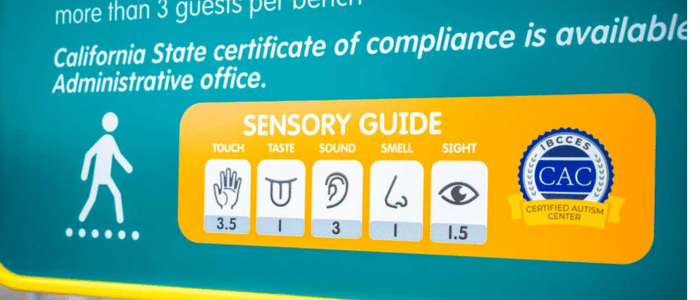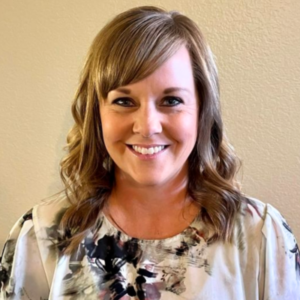
A new wave of inclusivity is sweeping through the realm of public recreation, focusing prominently on the needs of neurodiverse individuals. This shift is crucial for the evolution of parks and recreation departments in their approach towards accessibility and inclusion, as highlighted by Lane Gram, the Recreation Manager at Gilbert Parks and Recreation, and Meredith Tekin, President of IBCCES during a recent podcast interview on Let’s Talk Parks with Berry Dunn.
Recognizing the Need for Inclusive Spaces:
Lane Gram, who has dedicated over two decades to adaptive recreation, sheds light on the necessity of evolving beyond physical accessibility to address the cognitive and sensory needs of community members.“It’s about more than just the physical,” Gram states, underlining the importance of addressing the often-overlooked sensory and cognitive needs.
Meredith Tekin, President of IBCCES, adds weight to this argument with compelling statistics: “One in six people have a sensory need or sensitivity,” and with the rising autism diagnoses, the need for inclusive spaces becomes increasingly critical.
The Certification Process:
Gram details Gilbert’s journey towards becoming a Certified Autism Center™ through IBCCES. This certification signifies a commitment to training staff in understanding autism and sensory needs. “It was a change from a reactive process of inclusion to a proactive process,” Gram explains. This shift is pivotal, as it demonstrates a move towards anticipating and thoughtfully addressing the needs of all community members.
Tangible Benefits of Autism Certification:
In Gilbert, the adoption of autism certification has brought about meaningful and tangible improvements in public spaces, directly addressing the needs of neurodiverse individuals. As Lane Gram shares these changes are not just about meeting standards but genuinely enhancing experiences:

1. Calm-Down Zones at Public Events: Gilbert has introduced calm-down zones, which are specially designed areas in public events. These zones are equipped with features like noise-canceling headphones and calming lighting to provide a safe and quiet space. As Gram describes, “There’s a quiet tent that individuals could go into with noise-canceling headphones. It’s away from there, with calming chairs and lights.”
2. Sensory-Friendly Hours at Community Festivals: Another significant change is the establishment of sensory-friendly hours at festivals. During these periods, the environment is modified to be less overwhelming. Gram mentions, “We have created a quiet sensory-free hour before events so that individuals with sensory sensitivities can still enjoy the event.”
3. Thoughtful Park Designs: In terms of park design, Gilbert has been mindful of incorporating sensory-friendly elements. This includes playgrounds and park areas that cater to diverse sensory needs. “Playgrounds close to lakes are common… but then a splash pad with a fence or barrier is something they seek out because it’s easier to control,” explains Gram.

These initiatives, as Gram emphasizes, are about “making them better people, better stewards for the community,” indicating a deeper commitment to inclusivity and a better understanding of the diverse needs within the community. This approach goes beyond compliance, aiming to create environments where everyone, regardless of their sensory or cognitive needs, feels included and valued.
Beyond Physical Adjustments:
Tekin emphasizes that the impact of certification goes beyond physical modifications. It’s about “empowering your staff with knowledge,” she notes, highlighting the importance of having a well-informed staff that can empathetically and effectively interact with all community members.
Addressing Challenges and Building a Future Vision:
The journey toward creating fully inclusive and neurodiverse-friendly public spaces, as is not without its challenges. Implementing these changes requires a fundamental shift in mindset and approach. Lane Gram and Meredith Tekin both acknowledge the complexities involved in this transformative process.

Despite these challenges, the opportunities they present are immense. These two shed light on the significant impact that inclusive practices have, not just for autistic and sensory-sensitive individuals but for the community as a whole. Lane Gram discusses how the Town of Gilbert faced these challenges head-on. They took a comprehensive approach that included IBCCES’ autism training for all staff levels, from grounds maintenance to recreation staff, ensuring a universally informed and empathetic approach to service.
One key challenge is the need for widespread education and awareness among staff and the community. As Gram notes, “it’s about understanding the opportunities and being able to see them.” This insight underlines the importance of recognizing inclusivity as an opportunity to enhance community well-being, rather than just a compliance requirement.
Moreover, Tekin emphasizes the need for continuous engagement and feedback from the community. She suggests that embracing inclusivity is a journey, not a one-time effort. Continuous learning, adaptation, and improvement are essential to ensure that parks and recreation facilities meet the evolving needs of their communities.
Expanding the Impact:
The podcast also touches on how Gilbert’s initiative has broader implications. The town’s approach serves as a model for other communities. As public spaces are integral to community well-being, their design and operation need to reflect and cater to the diversity of those they serve. This inclusivity extends beyond physical modifications, delving into the cognitive and sensory experiences of individuals.

Community Engagement and Feedback:
A vital aspect of Gilbert’s journey has been community engagement. Gram mentions the importance of making the community feel welcome and included in these spaces. They have added questions to their registration processes to make community members feel comfortable sharing information about their needs. This proactive approach has led to an increase in requests for inclusion services, demonstrating the community’s response to these initiatives.
Communication and Messaging:
Effective communication and messaging are critical to the success of these initiatives. This means using various channels and methods to communicate the availability of inclusive features and programs. It includes everything from website updates, social media posts, to physical signage in parks and recreation areas. As Tekin puts it, “if you think you’re over-communicating, you’re probably doing just enough.” Providing detailed information about the available facilities and accommodations is crucial for individuals to feel comfortable and informed about using these spaces.
Transparency is key in these communications. Detailed information about the available facilities and accommodations not only helps in setting the right expectations but also builds trust within the community. This involves providing specifics about sensory-friendly areas, accessibility features, trained staff, and any special programs designed for these individuals and their families.

Lane Gram and Meredith Tekin, paint a vivid picture of a future where inclusivity in public recreation spaces is deeply interwoven with an understanding of neurodiversity. This future is not just about creating spaces that are accessible but about creating environments where every individual, regardless of their sensory or cognitive needs, feels valued and understood. As we continue to advocate for and build these inclusive environments, we not only enhance the quality of life for autistic and sensory-sensitive individuals but also enrich our communities as a whole.
Looking for Ways to Make Your Organization More Inclusive?
Please fill out the form below to get connected with a team member for more information
JAN

